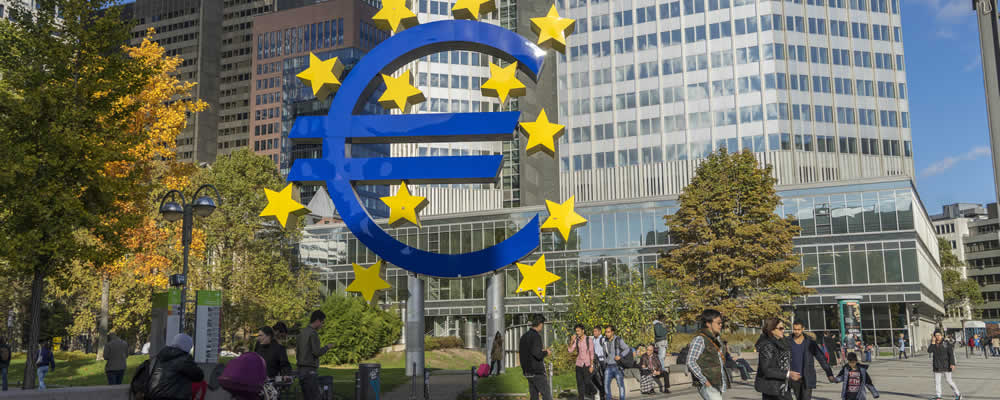Euro Pound Exchange Rate Zigzags as Eurozone Trade Disappoints
The Euro Pound (EUR/GBP) exchange rate is falling this afternoon as the Eurozone’s latest trade balance weighs on the Euro (EUR).
The movement erases EUR/GBP’s earlier gains, leaving the pair to have traded sideways over the course of the session.
At the time of writing, the EUR/GBP exchange rate is trading at around £0.85.
Euro (EUR) Firms Despite Underperformance from Eurozone’s Trade Balance
The Euro (EUR) initially traded higher against the Pound (GBP) today but slipped following the Eurozone’s latest trade balance.
In March, the Eurozone posted a €16.4bn deficit, significantly wider than February’s €8.8bn deficit and massively missing market forecasts of a €19.8bn surplus.
This is largely attributed to Russia’s invasion of Ukraine, as soaring energy prices saw imports surge 35.4% to hit a record high.
Meanwhile, the European Commission has eased GDP forecasts from 4% to 2.7%, with growth predicted to slow to 2.3% in 2023.
The Commission stated:
‘The outlook for the EU economy before the outbreak of the war was for a prolonged and robust expansion. But Russia’s invasion of Ukraine has posed new challenges, just as the Union had recovered from the economic impacts of the pandemic.
‘By exerting further upward pressures on commodity prices, causing renewed supply disruptions and increasing uncertainty, the war is exacerbating pre-existing headwinds to growth, which were previously expected to subside.’
This downbeat view of the Eurozone economy saw EUR/GBP shed its earlier gains.
Pound (GBP) Dented amid UK Cost-of-Living Crisis
Meanwhile, the Pound initially faced headwinds against the Euro this afternoon as the UK faces the joint woes of a cost-of-living crisis and the Northern Ireland protocol row.
The UK’s cost-of-living crisis was today highlighted by record-high diesel prices.
The average price for a litre of diesel has risen to £1.80 in the UK as economic sanctions imposed on Russia begin to drip through to the forecourts.
This is likely to exacerbate the UK’s cost-of-living crisis as household incomes struggle to keep up with soaring prices.
Moreover, the return of Brexit uncertainty is further hindering GBP exchange rates.
Today, Boris Johnson is in Belfast to discuss the Northern Ireland protocol.
Although Johnson has said the UK government wants to reopen negotiation channels with the EU, reports state he will make unilateral decisions if the EU does not change its current position.
If unilateral action occurs, it may strain the UK-EU relationship and potentially disrupt trade.
These concerns initially pushed the Pound lower against the Euro. Following the Eurozone’s dire trade data, they are likely limiting any gains.
Euro Pound Forecast: UK Inflation Takes Spotlight
Looking ahead, the Euro Pound exchange rate may be bolstered by the UK’s latest consumer price index.
In April, the UK’s CPI is predicted to rise from 7% to 9.1%. If inflation does continue to rise, it may exacerbate the UK’s cost-of-living crisis as the BoE maintains its dovish rhetoric. In turn, this is likely to hinder GBP exchange rates.
As for the Euro, it may be weighed on by the Eurozone’s latest GDP growth rate. The second estimation for the first quarter’s GDP is forecast to slip from 0.3% to 0.2%.
The single currency may also be influenced by a speech from European Central Bank (ECB) President Christine Lagarde on Tuesday. If Lagarde delivers a hawkish tone, it may boost demand for the Euro.



